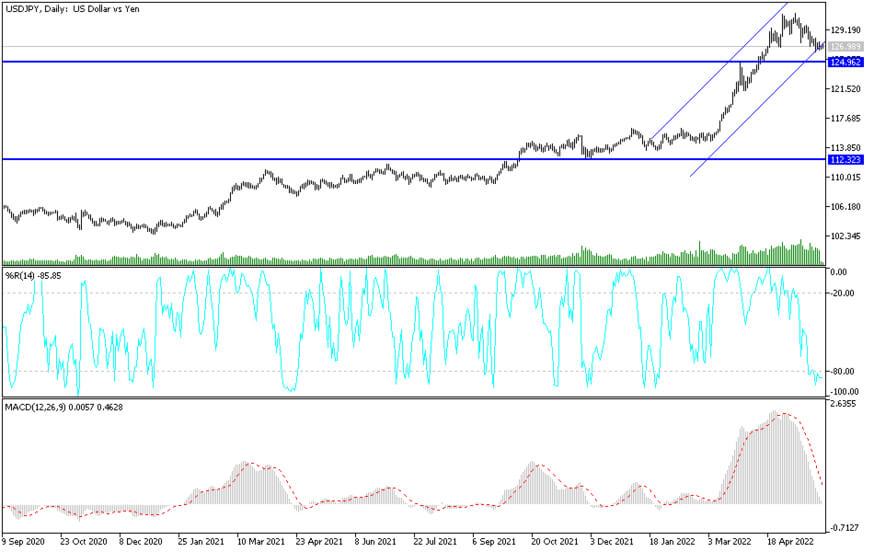For five trading sessions in a row, the losses of the USD/JPY currency pair stopped at the support level 126.35 and settled around the 127.20 level at the time of writing the analysis. The recent profit-taking was normal after the dollar-yen pair gained 20-year highs during this month's trading. Despite the recent performance, the US dollar still has strength factors, the most prominent of which is the future of raising US interest rates strongly during 2022 to contain US inflation, which reached its highest level in 40 years.
Tougher consumer spending and a decisive narrowing of the merchandise trade deficit show that the US economy is emerging in no time from a hole in the first quarter. Maintaining that momentum later this year is more of a question mark as manufacturing and housing weaken along with employment and wage growth. Inflation, while declining a bit, is still elevated and so the Fed will continue to press more aggressively on monetary policy.
In April, inflation-adjusted household purchases posted the strongest advance in three months and will help queue up a recovery in GDP this quarter. The goods trade deficit - a large contributor to the 1.5% annual decline in first-quarter gross domestic product - last month contracted by the most since 2009. While these developments are reasons for optimism about the US economy, regional manufacturing surveys have shown setbacks, while Capital equipment orders eased.
This week, the government is expected to report that US employment growth slowed in May, indicating that labor demand is starting to turn less hot. This may help ease wage pressures later this year, and eventually provide some relief for central bankers in their quest to bring down inflation. Consumer spending was solid in April, rising 0.7% based on the inflation rate. The savings rate has fallen to its lowest level since 2008, indicating that Americans are increasingly relying on savings as price pressures strain budgets.
The increase in spending was widespread, driven by goods and services. Economists had expected demand for services such as travel and entertainment to outpace merchandise expenditures as pandemic fears fade, but inflation-adjusted spending on goods rose 1% in April from the previous month and services rose 0.5%.
"The latest report shows that consumers continue to consume despite facing the highest rate of inflation in 40 years," Wells Fargo & Co economists Tim Quinlan and Shannon Seery wrote in a note. "But we are approaching the end of the lollipop," they added, noting the decline in the savings rate.
Meanwhile, while inflation is falling year-on-year, it is still running three times faster than the Fed's 2% target and helps explain why central bank officials expect to implement half-point US interest rate increases in upcoming meetings. Wells Fargo economists also wrote that this could also lead to a decline in consumer spending over the next several quarters.
According to the technical analysis of the pair: So far, the bears are still controlling the performance of the USD/JPY currency pair. Breaking the last strong support 126.35 will be important for more bears’ control over the trend. The currency pair has already exited the ascending channel and will not return to it strongly without moving towards the resistance levels 128.75 and the psychological top 130.00 again. I expect quiet movements for the currency pair today in light of the American holiday, and the stronger interaction will be with the US jobs numbers later this week.


